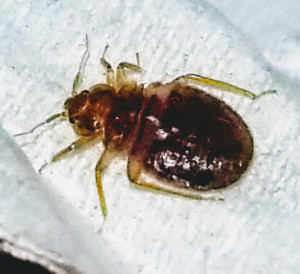 Recently, bed bugs have been an active and popular discussion in the news. They are a problematic pest across the United States, beyond just bed bug bites. In fact, one out of five Americans has had a bed bug infestation in their home or knows someone who has encountered bed bugs.Considering the increasing problem with bed bugs, a survey of pest management professionals has found that prior to 2000 only 25 percent had encountered bed bug infestations, but in 2013 an amazing 99.6 percent of U.S. based professional pest management companies encountered bed bug infestations. Bed bugs are found in places beyond homes and hotels, such as hospitals, schools, doctors’ offices, public transportation, college dorms, day cares, offices and any other places where humans live or gather.
Recently, bed bugs have been an active and popular discussion in the news. They are a problematic pest across the United States, beyond just bed bug bites. In fact, one out of five Americans has had a bed bug infestation in their home or knows someone who has encountered bed bugs.Considering the increasing problem with bed bugs, a survey of pest management professionals has found that prior to 2000 only 25 percent had encountered bed bug infestations, but in 2013 an amazing 99.6 percent of U.S. based professional pest management companies encountered bed bug infestations. Bed bugs are found in places beyond homes and hotels, such as hospitals, schools, doctors’ offices, public transportation, college dorms, day cares, offices and any other places where humans live or gather.
Is it bed bug season?
Bed bugs are active in summer and winter and are not considered “seasonal” in the same sense that mosquitoes, ticks and stinging insects are. Still, many consider bed bugs to be a greater problem in the warmer months, however it is not the bed bugs that are more active in the summer months – the humans are. In warmer weather we typically travel more, often sleeping in hotels and motels, using various modes of transportation, and thereby increasing our risk of exposure to bedbugs. The bed bugs themselves are year-round pests.
How will I recognize a bed bug when I see one?
Bed bugs have flat oval bodies, six legs, are reddish-brown in color and are similar in size to a dog tick – many have described the adults as resembling a flat apple seed. Adult bed bugs are approximately 1/4 inch long, while nymphs (juveniles) may be as small 1/16 of an inch. With feeding, they enlarge or engorge with blood. The adults turn from a brownish to reddish color, while the translucent nymphs may become bright red during the feeding process.
What should I do if I have bed bug bites?
Bed bug bites do not typically require treatment. It is best to clean the bite site(s) with soap and water and avoid scratching so as to prevent secondary infection. Progressive swelling, warmth, tenderness and sometimes (albeit rarely) fever may be signs of secondary infection, which should be managed with antibiotics as appropriate. Much more common are complaints of itching. For how to treat bed bug bites that cause severe itching, topical steroid creams or oral antihistamines may offer relief from itching and thus decrease the risk of infecting the bite site.
How do I get rid of bed bugs?
When it comes to controlling bedbugs, “do it yourself” should not be anyone’s motto. Bed bugs are notoriously difficult to eradicate – 76 percent of pest professionals say they are the most difficult pest to control. As such, people who suspect a bed bug infestation should turn to a qualified pest professional with expertise in treating these pests. The pest professional will evaluate the extent of an infestation and recommend the best course of treatment. In fact, the Centers for Disease Control and Prevention endorses that appropriate control of a bed bug infestation requires an experienced pest management professional and recommends that victims be advised against attempting to control measures themselves.
ProActive Pest Management is your bed bug professional to call. We will thoroughly inspect your home and ensure quick eradication of the bed bugs so you can feel safe in your home again.
